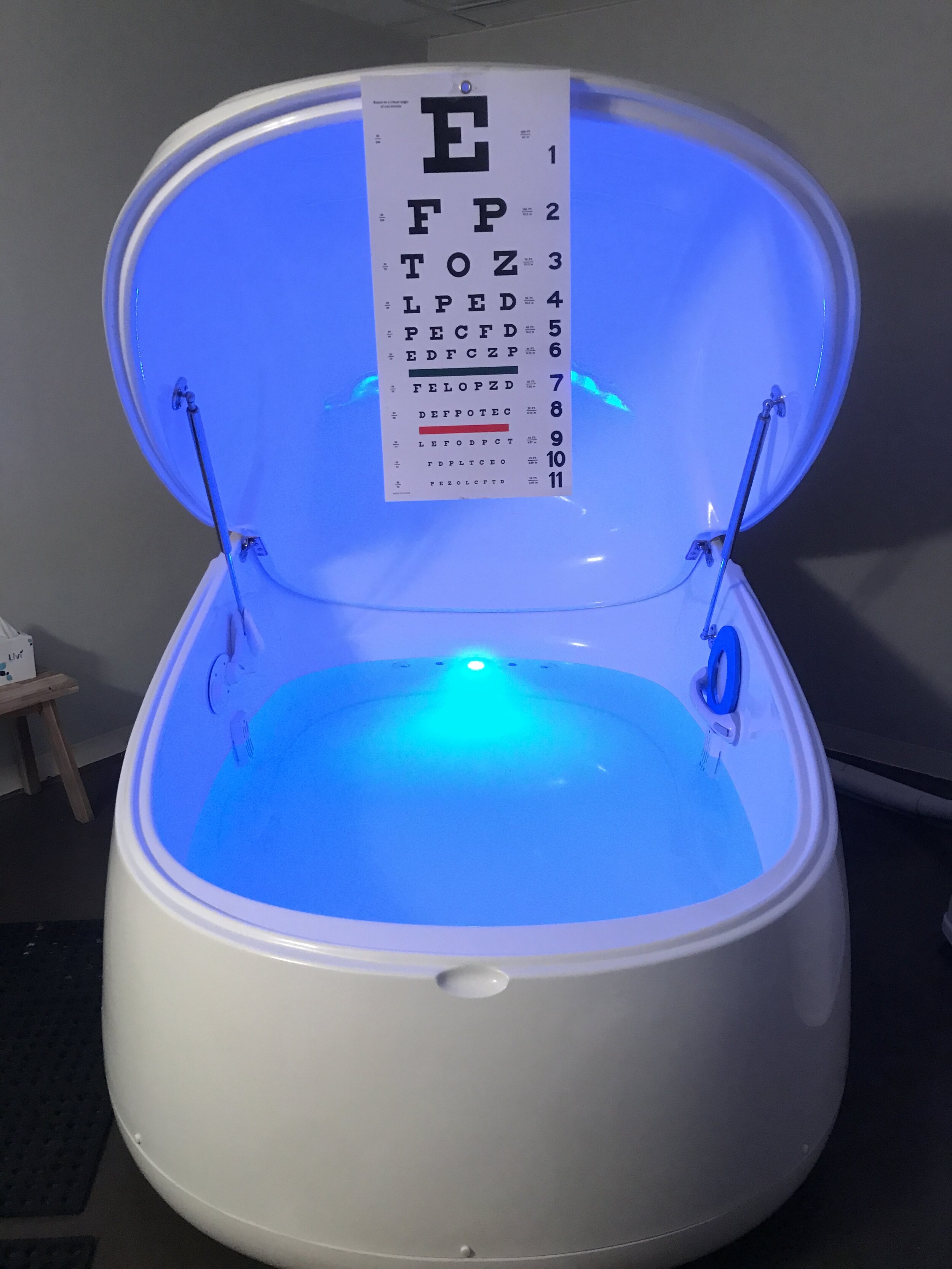The Float Zone’s Blog Page
Float therapy is a potent way to improve Vagal tone, a barometer of our nervous system. Floating creates an overlapping positive effect on both physical and emotional health.
From a sniffle to surgery, there is an unrealistic expectation that insurance will foot the bill, including the broad spectrum of alternative medicine choices. Novel approaches to the treatment of anxiety, depression and stress management are now more visible and accepted. One emerging therapy known as float therapy is putting its collective hopes, dreams and grass roots dollars into research, for a disillusioned end game goal of going head to head with big pharma and the behemoth, politically entrenched insurance industry, with high hopes that insurance coverage will be the answer to the long term survival, awareness and usage of floating.
While insurance coverage for floating may be of limited benefit for the consumer, it presents a troubling situation for the bottom line of float center owners, who generally have big hearts and want to save the world, but also high overhead and maintenance costs as compared to massage, for instance. Some float centers seem to be on the right track and are creating their own version of “insurance” by establishing programs and discount packages for frequent floating. Making floating more accessible and affordable through programs that encourage regular use, avoids the middleman of the insurance company, dictating their own version of usage and cost based on a third party understanding and application. Thus, while float research is a good means for establishing viability, credibility and awareness, the end game purpose of research must also be considered in the mix. With all this in mind, it appears that the best way to maximize value to both the consumer and float center small business owner is to not involve insurance but to have the float industry collaboratively design and utilize a model better suited for float industry survival.
Float therapy is a good choice for athletic recovery. From decreasing inflammation to improving sleep, there are many ways that floating helps pain, prevention and performance for the recreational and professional athlete.
How does float therapy help traumatic brain injury (TBI)? From headaches, neck pain, mood and sleep issues to concentration, focus and energy levels, float therapy is disruptive to the brain in a good way. Floating on a regular basis can shift an individual into a more productive, positive, active human with less pain and dysfunction. This case study is an excellent example for doctors, health care practitioners and the public to better understand the value of floating on a regular basis to help manage ongoing symptoms related to TBI and concussion.
Does insurance cover float therapy? That’s the million dollar question. Those that use float therapy for therapeutic reasons need to float more frequently than those just seeking a periodic chill - and there are cost considerations. Considering the profound mind and body effects of floating, some feel that it should be an insurance covered benefit. There are some researchers currently doing studies to make floatation therapy more mainstream, even with hopes that someday it would be a routinely covered benefit. In this multi-part series on insurance and floating, this first blog sets the stage for the question itself - should insurance cover float therapy?
Float therapy leverages both medical and alternative medical care.
When The Float Zone, a float therapy spa in Richmond, VA is voted one of the winners in the Best Spa category in Style Weekly magazine’s 2021 Best of Richmond, it shows a sign of the times. We are all seeking ways to manage stress, anxiety and better sleep. Floating is a unique experience, unlike other common spa experiences, that positively and predictably improves your well-being. Humbled and thankful, The Float Zone is proud to make a difference in RVA.
Not all floats are awesome. Especially if you are new to floating, there are sometimes unrealistic expectations, such as thinking every float will enable an out of body experience, or that you’ll have some life changing realization while in the tank. While it is true that it is uncommon to have a bad float and that you generally feel perceptibly uplifted in both body and mind, poor preparation can lead to excess mind chatter, inability to get comfortable or taking longer to get into that sought after theta brainwave state. It sounds funny to say that floating, even though you are doing nothing, takes practice. Developing a few simple habits can ensure better quality, more predictable floats.
Float Therapy serves to get the body off the mind, as well as reducing so many other external stimuli, and in doing so, allows for a deep brain reset that results in less anxiety. Research in the world of floatation is supportive in demonstrating potent anti-anxiety effects. Floating is a drug-free, safe and effective choice for managing stress and anxiety in our culture of stress and anxiety.
Float therapy boosts heart health in a number of ways. Here are just a few.
Float Therapy boosts immunity in a variety of ways. From deep relaxation and a resetting of the brain’s perception of reality, floating helps pain, sleep and mood. Floatation affects both magnesium and hormone levels. Floating reduces stress.
The best sensory deprivation float tank experience can be found by paying attention to a few key issues.
Sensory deprivation isolation tanks are the perfect antidote for pandemic times. Detatch, unplug, reset, slow down. Sleep better. Manage stress and anxiety. Clear the head to make better decisions. Improve energy. Basically doing nothing for an hour in a foot Epsom Salt saturated water while floating effortlessly, can be crucial for improving both physical and mental health.
Sensory deprivation, known as floating, float therapy, or restricted environmental stimulus therapy (“REST”) is the perfect antidote when Mercury is in retrograde.
Millions of people deal with pain on a daily basis. Finding positive and effective ways to cope with pain is sometimes easier said than done. Floating is on a short list of options for pain. This blog discusses five out-of -the- box ways to fight pain.
Yoga and floating, also known as float therapy, floatation, sensory deprivation or restricted environmental stimulus therapy, have incredible similarities. The combination of these wellness practices is the epitome of how passive and active therapies can leverage each other and provide incredible benefits with stress, anxiety, sleep, pain, focus, creativity and energy.
Did you know CBD can be used in various ways? Learn about vaping or taking CBD orally through a tincture.
Concussions are prevalent in professional sports. Floating is one effective way to alleviate the effects of concussion. One hour in silence and the absence of sound is a treat to the brain. You can also use a red light in the float tank to help minimize the issues from traumatic brain injury like concussion.
Cannabidiol or CBD, as it is commonly called, has found its way into everyday conversation. CBD is an extract from the cannabis plant that has an amazing number of natural health benefits.
Float therapy is an excellent choice of self care for home caregivers, as well as medical and alternative medical practitioners who tend to not take time out for themselves and instead take on unintended and invisible consequences of vicarious stress, anxiety and pain syndromes. Floating or floatation does not require a therapist and offers immediate, effective and lasting results for both mind and body.
Floatation Therapy or floating is one of the most accessible and relaxing pain relieving therapies available today. Floating, for the majority of those who first try it, is a wonderful, safe and effective tool for navigating our modern society. But for a few, the float experience can evoke a temporary sense of motion sickness or nausea, which can limit its relaxing feeling and other potential benefits.
Float therapy mitigates the pain, inflammation and lack of mobility associated with arthritis. From anti-inflammatory action, to stress reduction, to improvements in sleep, immunity and mood, floatation is safe, effective and accessible.
Floatation therapy is proving to be a viable alternative and adjunct to managing chronic pain. Opioid managed chronic pain may respond well to floatation therapy. A new case study on chronic pain, opiate usage and floatation provides a window into the benefits of this mind and body therapy.
Pain. It can be consuming, frustrating, debilitating, distracting, yet always subjective to the individual experiencing it. Chronic pain is of epidemic proportions and is a major cause of disability. Until recently, pain was treated like a fifth vital sign. Blood pressure, pulse, respiration, temperature, and…pain?
Floatation therapy is emerging as a valid, effective and adjunctive means for managing chronic pain.
Floatation therapy helps Multiple Sclerosis. Here are 5 ways how floating helps MS.
All of us have experienced the consequences of a sleepless night. Everything the next day requires more effort. You lack energy and motivation. You feel groggy and irritable. Try floating. It might help you sleep.
Sleep has been of significant interest to the floatation therapy industry as evidenced by thousands of anecdotal instances of improved sleep after floating. While floating, like sleep, you are essentially "offline". with minimal to no external stimuli. Both floating and sleep require sensory disconnection as an essential requirement. Many floaters actually do fall asleep during part or all of their float. Most are somewhere in between sleeping and wakefulness.
This intentional gift from Todd sparked a desire to interact with and to display the visions and interpretations of community artists within the context and interplay of how floating inspires and brings new love and new insights.
"Where Floating Meets Art" at The Float Zone, featuring the works of avid floater and renowned artist, Todd Hale's works are featured from Feb - April 2018. Come float and enjoy some mind opening art displays!






























Using float therapy, floatation or floating, along with tapping on specific acupressure points, can relieve symptoms of jetlag, time zone changes, daylight savings, and disruptions in circadian rhythm.